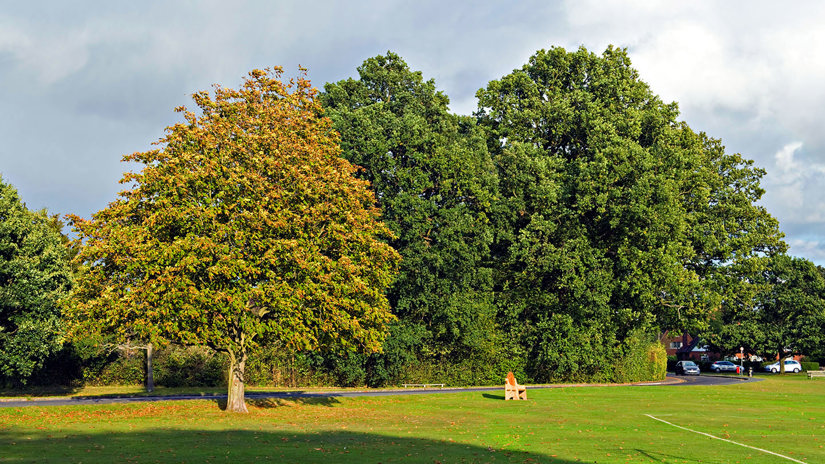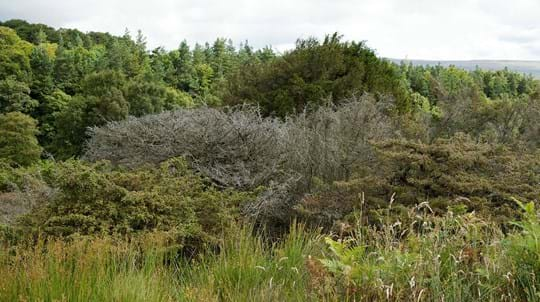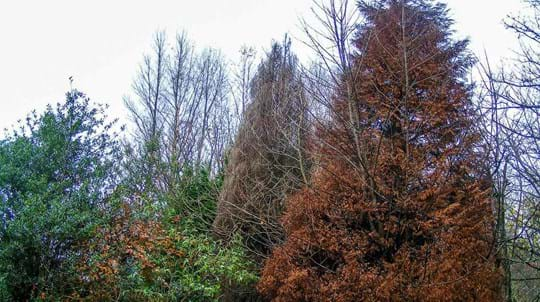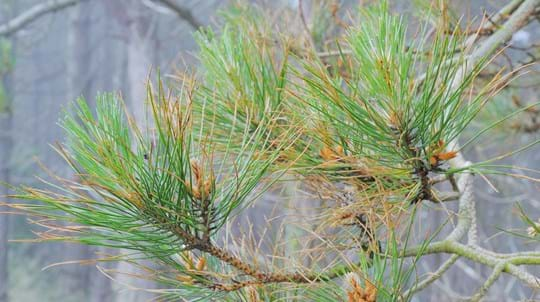
Credit: Ben Jones / Forestry Commission
What happens to the tree?
Phytophthora ramorum spores spread via wind-driven rain. When they land on a leaf they grow into the tree by breaking down the cell walls in the leaf. This leads to the initial blackening symptoms. It then grows within the tree and blocks its water transport system leading to dieback and eventual death. While this process is happening the pathogen will also be spreading onto other nearby trees and shrubs.









